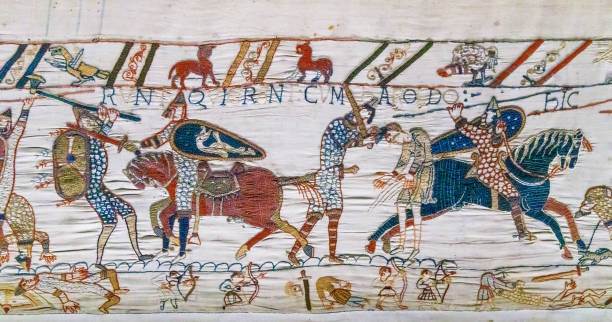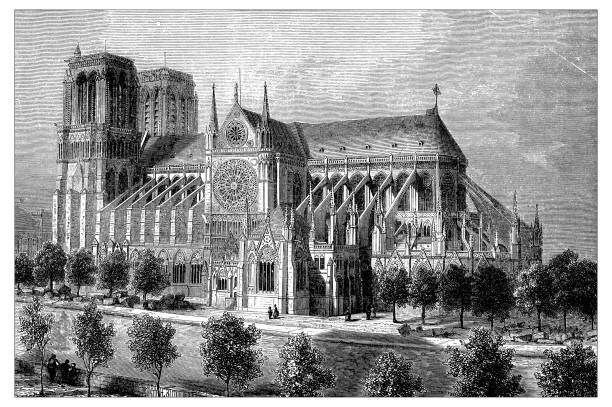The Medieval Work Day: Unveiling the Life of a Labourer
In the heart of history lies the intriguing tale of the medieval labourer, whose life was intricately woven into the fabric of society during those ancient times. Journey with us through the annals of history as we delve into the remarkable and arduous life of a labourer during the medieval workday. The medieval era was characterized by a hierarchical social structure, with labourers occupying a vital yet often overlooked role. While knights, lords, and royalty often steal the spotlight, it was the toil of labourers that laid the foundation for the grand castles, cathedrals, and towns we admire today.
The Break of Dawn: A Glimpse into the Start of the Day
As the first rays of sunlight broke through the horizon, medieval labourers were already in motion. Their day began with the crow of the rooster, heralding the start of another workday. With families to support and fields to tend, there was little time to linger in bed. The morning routine involved a simple meal to fuel their bodies, often consisting of hearty bread, cheese, and ale.
Tilling the Earth: Agriculture as a Way of Life
A significant portion of medieval labourers were engaged in agriculture, toiling endlessly to ensure the kingdom's sustenance. From plowing the fields using primitive wooden plows to sowing seeds meticulously, every step was a testament to their dedication. The changing seasons dictated their tasks, from planting in the spring to harvesting in the autumn, each phase contributing to the cycle of life.
The medieval period was characterized by subsistence agriculture, where farmers cultivated small plots of land to sustain their families and communities. However, this practice often led to soil exhaustion and inefficient land use. A breakthrough came with the introduction of the three-field system, a method that revolutionized how crops were cultivated and dramatically increased yields.
The introduction of the three-field system marked a major medieval farming achievement that transformed agricultural practices, boosted food production, and fueled economic growth. This innovative approach to crop rotation and soil management not only sustained populations but also set the stage for social, economic, and agricultural developments that continue to shape our world today.
Craftsmanship: Weaving Wonders by Hand
Beyond the fields, medieval labourers showcased their craftsmanship in various trades. Blacksmiths shaped metal with precision, constructing tools and weapons that defined the era. Weavers, on the other hand, transformed threads into intricate tapestries, a true art form that adorned the halls of nobility. These skilled labourers were the backbone of economic growth, creating goods that were traded far and wide.
The Bayeux Tapestry is a renowned and iconic example of weaving from the medieval era that continues to captivate and intrigue people to this day. The Bayeux Tapestry is a remarkable piece of textile art that tells the story of the events leading up to the Norman conquest of England in 1066. Despite its name, the "tapestry" is actually an embroidered cloth, measuring about 70 meters (230 feet) in length, making it one of the most ambitious and detailed works of its kind from the medieval era.
Commissioned by Bishop Odo of Bayeux, the half-brother of William the Conqueror, the tapestry is believed to have been created by skilled embroiderers over several years. It combines intricate embroidery techniques with vibrant colours to depict scenes from the Battle of Hastings, where William, Duke of Normandy, defeated King Harold II of England. The tapestry serves as a visual historical record, offering insights into clothing, armour, architecture, and the military tactics of the time.

The Bayeux Tapestry is undoubtedly one of the most famous and celebrated examples of weaving from the medieval era. Through its detailed embroidery and captivating scenes, it offers a window into the past, providing a tangible connection to the events and people of the time. This remarkable work of art serves as a lasting tribute to the skill and creativity of medieval weavers, reminding us of the enduring beauty that can be crafted through threads and imagination.
Cathedrals of Stone: Building a Legacy
The majestic cathedrals and castles that dot medieval landscapes stand as a testament to the architectural prowess of the era. labourers, often guided by master builders, engaged in backbreaking work to construct these monumental structures. From quarrying stones to painstakingly assembling them, their dedication lives on in the soaring arches and intricate facades that continue to inspire awe.

Undoubtedly, one of the most remarkable and enduring accomplishments of medieval labourers is the construction of the awe-inspiring Notre-Dame Cathedral; a masterpiece of labour and artistry. The Notre-Dame Cathedral, located on the Île de la Cité in Paris, France, is a true marvel of medieval craftsmanship. Its construction began in the 12th century and spanned over two centuries, with countless labourers devoting their lives to this monumental endeavour. The cathedral's intricate design, featuring stunning Gothic architecture and intricate sculptures, is a testament to the unwavering commitment of these labourers.
Labourers from all walks of life came together to contribute to the construction of Notre-Dame Cathedral. Stonecutters, masons, carpenters, and artisans poured their heart and soul into every facet of the cathedral. Their dedication was not only a reflection of their craftsmanship but also of their deep faith and commitment to a higher purpose. The labourers understood that their work would transcend generations, leaving behind a legacy that would inspire awe and reverence for centuries to come.
Dusk's Arrival: The End of a Day's labour
As the sun dipped below the horizon, signalling the end of the workday, labourers returned to their humble abodes. The evening was a time for rest and reflection, as families gathered around the hearth to share tales of the day. A simple supper of porridge or stew warmed their tired bodies, preparing them for another day of labour ahead.
Legacy and Remembrance: Honouring the labourers
In an era where their contributions were often overshadowed, medieval labourers left an indelible mark on history. Their unwavering dedication shaped the landscapes we admire today, and their legacy continues to resonate in the present. It is imperative that we remember their toil and sacrifice, acknowledging the role they played in building the foundations of modern society.